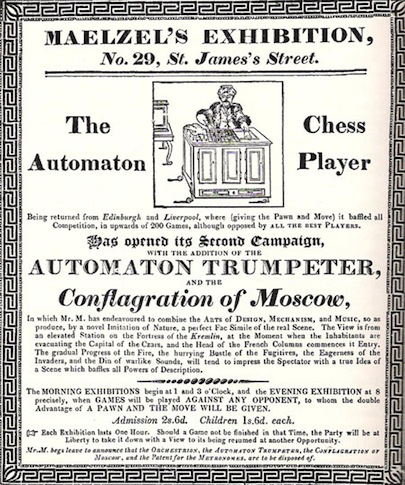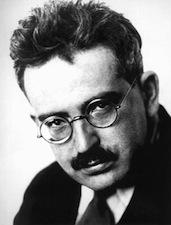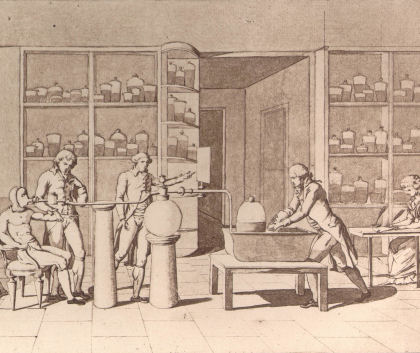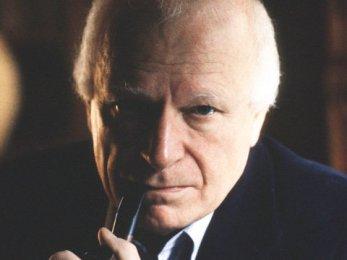Simon Schaffer, “Enlightened Automata” in The Sciences in Enlightened Europe, edited by William Clark, Jan Golinski, and Schaffer (Chicago University Press, 1999)

“Enlightened Automata” is one of Schaffer’s few pieces that is especially forthright about the overarching scholarly project of which it is a part. It is certainly the centerpiece — and his clearest exposition — of his work on what he occasionally referred to as “machine philosophy,” a concept that interrelates several historical developments:
- The rising use of mechanisms in philosophical experiments, which have the virtue of preventing human fallibility and prejudice from influencing their outcomes.
- The use of mechanisms as explanatory metaphors in natural, moral, and political philosophy.
- The replication of natural phenomena and human behavior in mechanisms, i.e. automata.
- Industrialization, i.e., the replacement of craft processes with machinery, and the concomitant regulation and control of human action, especially manual labor, through managerial regimes.
Schaffer takes these four developments (but especially 2 and 4) to characterize the ideological ambitions of the Enlightenment. In “Enlightened Automata,” he leverages the history of the construction and display of automata (3), and commentary on such automata, as a means of probing these ambitions.
Schaffer specifically argues that the “idealized social order” (129) of the Enlightenment was one where “Enlightened science imposed a division between subjects that could be automated and those reserved for reason. Such a contrast between instinctual mechanical labor and its rational analysis accompanied processes of subordination and rule” (164). In other words, subjects were expected to surrender their independent judgment and skill to philosophical elites, and to follow their instruction. Automata acquired cultural significance to proponents and opponents of such a society because the relationship between an automaton’s creator and its own lifelike movements reflected this proposed social order. Or, as Schaffer puts it, the “automaton stays in place as a symbol of modernity because it helps us see the effects of [the] expropriation of virtuosity, science, and reason.”
In view of this ideal of an enlightened polity and economy, any notion (such as Immanuel Kant’s) that enlightenment could be a truly public phenomenon was doomed to be dispelled. As Schaffer writes, “It seemed as if most subjects had never been, could perhaps never be, enlightened” (164).
Of course, Schaffer is well aware that the attribution of mechanistic ambitions to Enlightenment thought is actually a feature of the polemics of the period about which he writes. Rather than historicize the critique, he accepts the validity of the critical insight, and follows its development throughout his piece. He notes its origins among eighteenth-century opponents of materialist philosophies, who believed that “the identification of the human and the machine would spawn libertinism, atheism, and insurrection” (149). He also draws on its reformulation in the industrial era by Karl Marx (1818-1883), for whom “the culmination of manufacture was just a system ‘set in motion by an automaton, a moving power that moves itself; this automaton consisting of numerous mechanical and intellectual organs, so that the workers themselves are cast merely as its conscious linkages'” (164).
 Walter Benjamin
Walter Benjamin
In the twentieth century the critique of mechanized humanity itself became a veritable intellectual industry, and was employed primarily as a means of diagnosing and attacking the ideological roots of modern evil. The “immediate inspiration” (127) for Schaffer’s piece is critic Walter Benjamin’s (1892-1940) interest in an eighteenth-century chess-playing automaton that was actually guided by a diminutive chess master concealed within its box (see illustration above). Benjamin, a Jewish affiliate of the Frankfurt School, on the run from spreading Nazism, saw in the human player a metaphor for his hope that “theology” could inhabit the Marxist “materialism” that he regarded as the way forward for humanity.
Schaffer correctly locates Benjamin’s interest in grappling with theology, materialism, and Enlightenment in a critical genealogy between Ernst Cassirer’s (1874-1945) Die Philosophie der Aufklärung (1932) and Jürgen Habermas’s more recent attempts to cope with the legacy of the Enlightenment and “the harm that it does” (127-28).
However, this critical tradition also more broadly encompasses the thought of Jean Starobinski, who “has associated the end of the Enlightenment with ‘a technical expansion of the human will'” (128); and, of course, the thought of Michel Foucault (1926-1984), who, in “the work in which he described the panopticon as the culmination of enlightened political anatomy, … argued that the knowledge of and power over ‘those who are stuck at a machine and supervised for the rest of their lives’ accompanied the production of the modern soul as ‘the prison of the body'” (151).
—
(At this point, I will pause to note that if you are interested in the question of the nature of the Enlightenment and in interpretations of its legacy — and, if you are a historian of science and technology, you should be, if for no other reason than its influence on influential figures such as Schaffer — you ought to be a regular reader of one of my favorite blogs, BU professor James Schmidt’s consistently informative Persistent Enlightenment. The editors’ introduction to The Sciences in Enlightened Europe, available via Google Books, also serves as a good primer on these issues, written from a historicized distance.)
—
Aside from the general critical tradition linking Enlightenment thought to the mechanization of humanity, Schaffer also draws on a range of scholarship, stemming from Marx’s aformentioned critique, linking the Enlightenment to efforts to philosophically dissect, routinize, and exploit the useful arts, and to manage the new class of laborers thus created. On this score he cites William Sewell’s observation that “the workers of the Encyclopédie are docile automatons who carry out their scientifically determined tasks with the efficiency and joylessness of machines”; Jean Ehrard’s observation that “the Encyclopedist apologia for labour is an apologia for capital”; and Ken Alder’s observation in his chapter* in The Sciences in Enlightened Europe, that (in Schaffer’s words) “the Encyclopédie repeatedly announced its aim to free the mechanical arts from the condescension and ignorance of the noble and the literate, yet it did so in the name of an ideal of rationalized labor processes under the guidance of enlightened managers” (126-127).
Schaffer also notes the role of more specifically scientific figures in actively abetting the rise of a newly rationalized regime of production and labor. He draws on Alan Morton’s “Concepts of Power: Natural Philosophy and the Uses of Machines in Mid-Eighteenth-Century London” (1995), which discussed natural philosopher John Desagulier’s (1684-1744) “machine that could measure the maximum effect of a laborer’s power to raise a load,” thereby setting an influential standard (147). Similarly, he draws on Lissa Roberts’s “The Death of the Sensuous Chemist” (1995), which traces not only the application of increasingly complex instrumentation to chemistry, but engineer Charles Coulomb’s (1736-1806) effort “to evaluate the maximum effect extractable from labor.”
 Lavoisier conducts an experiment on human respiration
Lavoisier conducts an experiment on human respiration
Similarly, Schaffer relates how in his 1993 essay “Mediations: Enlightenment Balancing Acts, or the Technologies of Rationalism,” Norton Wise analyzes Antoine-Laurent Lavoisier (1743-1794) as a key figure in the introduction of precision measurement to chemistry, who was also “involved in studies of the balance of profit and loss in the national agrarian economy,” and who “managed to develop a technique for the precise evaluation of the mechanical worth of intellectual labor,” which “treated all humans as so many machines absorbing vital air and nutriment” (134). Schaffer also highlights how Wise explores how the “strategies used to produce the sphere of enlightened action secured that culture to the extent that they disappeared from view, so that the nature of the late Enlightenment seemed an unmediated reality,” which could be represented “as natural” (148).**
Of course, machine philosophy extended from labor to the inner workings of the body and mind as well. Schaffer draws on architectural historian Thomas Markus’s term “production utopias” to connote the “visionary workshops of the late Enlightenment,” which “often included provision for the mechanical training of their inmates” (150). These workshops included factories, but also schools, prisons, and other such institutions for molding people. Indeed, Schaffer draws on Roger Chartier’s The Order of Books (1992) to argue that Enlightenment philosophers were themselves subjected to rationalized literary production.
These same mechanizing ambitions also extended to more ordinary social relations. Schaffer points to how Peter Dear, in his 1998 piece, “A Mechanical Microcosm: Bodily Passions, Good Manner, and Cartesian Mechanism,” had “perceptively indicated [how] the formalization of civility in early modern bourgeois society helped make Cartesian accounts of mechanization current” (136). For Schaffer, such formalization was evident in the display of automata exhibiting polite behaviors in salons and other polite settings, and in their use as “fine resources for contemporary debates on the art of acting and the ‘physics’ of emotions” (138). (Adelheid Voskuhl has taken up this specific subject in her 2013 book, Androids in the Enlightenment)
Here’s a pertinent clip from Schaffer’s recent, outstanding BBC documentary, Mechanical Marvels, Clockwork Dreams:
http://www.youtube.com/watch?v=bY_wfKVjuJM
Such uses of machine philosophy could also be turned to satisfy the more lurid and exploitative sexual proclivities of Enlightenment figures (138-139). Here Schaffer points to Terry Castle’s explanation of “how such an apparently innocent commodity as the weatherglass could be taken as an embodiment of the automatic movements of sexual desire, the femme-machine”; to Roy Porter’s (1946-2002) study of the “erotic devices of James Graham’s [1745-1794] celestial bed”; to Leo Braudy’s studies of the “hydraulic pornography of John Cleland’s [1709-1789] fictions”; and to Roland Barthes’s (1915-1980) more general argument that “the late eighteenth century’s notions of ‘the total machine,’ in which entire human groups were ‘conceived and constructed as a machine,’ reached their fullest elaboration in the libertine fantasies of Sade [1740-1814]”. This is also a theme in Schaffer’s 1996 piece, “Babbage’s Dancer,” glossed on p. 138 (but also available in full here). According to Schaffer, such works were “one way, as Joan Landes and Dena Goodman point out, in which the public sphere of the Enlightenment acquired its pronounced ambivalence toward the feminine.”
—
Schaffer’s marshaling of this historiography is in the service of a general argument that the intellectual project of the Enlightenment was part and parcel of the creation of a disciplined, exploitative society. He has little time for “historians [who] still deny that enlightened natural philosophies ‘fed the fires of the industrial revolution.'” (129).
Later (140-141), Schaffer makes clear that his criticism is not simply directed at those who might deny any link, but also at those who fail to detect deep (rather than thematic or coincidental) links. He quotes Jean-Marie Apostolides’s 1981 book Le Roi-Machine, on the mechanism of the absolutist court and state of Louis XIV, “At a moment when the actions of the first laborers working on industrial machines were decomposed and analyzed to improve performance, the body of the king-machine found itself being laid out in a multitude of mechanical actions.” Yet, Schaffer notes, “in this intriguing analysis the suggestion of some linkage between absolutist automata and the new industrial formation of the early eighteenth century remains coincidental.”
Similarly, Schaffer takes Otto Mayr’s 1986 book, Authority, Liberty, and Automatic Machinery in Early Modern Europe to task. Although Mayr had “associated clockwork models of physiological order with images of the absolutist state, and later eighteenth-century homeostatic machinery with the liberal critique of tyranny,” and although “he indicated the intimate connection between Frederican absolutism and the mechanical philosophy and noted the Prussian king’s patronage of [Julien Offray de] La Mettrie [1709-1751, author of L’homme Machine (1748)],” he “was in the end unwilling to suggest more than an interesting coincidence between fashions for clockwork and for absolutism, and between self-regulating machines and liberalism.”
 Reinhart Koselleck
Reinhart Koselleck
Perhaps most remarkably, Schaffer critiques Reinhart Koselleck’s 1959 book Kritik und Krise: Eine Studie zur Pathogenese der Bürgerlichen Welt (translated into English in 1988 as Critique and Crisis: Enlightenment and the Pathogenesis of Modern Society) for not appreciating the full scope of mechanized culture. Schaffer notes that Koselleck “connected Enlightenment clubland with Hobbesian mechanization, asserting that Leviathan, ‘the automaton, the great machine,’ forced the philosophical construction of a secluded space of alienated critique where a politically impotent intelligentsia could assert its judgmental superiority.” Yet, Schaffer goes on, “Unconcerned with Hobbesian natural philosophy or with its progeny in Enlightenment materialism, Koselleck … ignored the issue of military and political discipline. He understood Friedrich II’s predicament in terms of the dualism of morality and politics rather than the monism of his subjects’ bodies” (141).†
Schaffer’s objective is clear: to reinforce the position of historians who “convincingly indicate the intimate connection between the machinery of natural philosophers’ concerns and that of the new entrepreneurs and projectors.” Accepting this connection leads to the unequivocal conclusion: “The lettered savants who plied their trade in a culture dominated by interests in economic improvement and civic sensibility were in fact noteworthy analysts of and contributors to mechanization and its consequences” (129). Enlightenment mechanization — as inextricably tied up as the idea is with the grand diagnostic projects of mid-twentieth-century intellectuals — is to be accepted as a clear and useful characterization of an epochal historical process.
So much (perhaps too much) for historiography. In Pt. 5, we look at Schaffer’s historical arguments concerning mechanistic natural philosophy, the production and display of automata, and the fate of Enlightenment ideology.
—
*”French Engineers Become Professionals; or, How Meritocracy Made Knowledge Objective”.
**On the theme of relating the introduction of mechanical instrumentation to science and the establishment of managerial regimes, see also Schaffer’s own work on the electric planetarium experiment earlier in the century.
†On the relationship between the thought of Koselleck and Habermas, see Persistent Enlightenment. Schmidt’s discussion somewhat clarifies Schaffer’s point here.